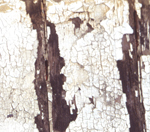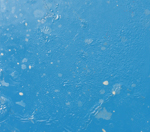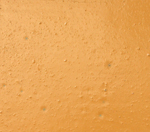Common problems and how to avoid them
The following troubleshooting guide is aimed at helping you identify some of the common problems associated with boat painting and providing you with information to avoid these occurring. This guide is by no means exhaustive – should you encounter a problem that you cannot diagnose, please contact the Helpline for further assistance.
The following troubleshooting guide is aimed at helping you identify some of the common problems associated with boat painting and providing you with information to avoid these occurring. This guide is by no means exhaustive – should you encounter a problem that you cannot diagnose, please contact the Helpline for further assistance.
Adhesion Failure

(also referred to as Flaking of Paint/ Delamination)
Avoid this by: Ensuring that the surface is clean, dry and free from contamination and has been suitably prepared according to the paint specification. Oily woods, such as teak and iroko, should be degreased with a solvent prior to varnishing. Be sure to follow the overcoating intervals between coats of paint.
Bittiness

Avoid this by: The correct preparation of the surface. Always clean before sanding and remove sanding residue from the surface before applying the next coat of paint. Ensure that the surface is not contaminated during the curing phase.
Blistering

Avoid this by: Ensuring that correct overcoating interval is followed to avoid solvent entrapment and other contamination. In immersed conditions the blistering could be osmosis.
Blushing

Avoid this by: Ensuring that the painted surface has not been exposed to moisture or condensation during the latter stages of drying and that the solvent blend is correct. This phenomenon is often seen with amine cured epoxies.
Brush Marks

Avoid this by: Thinning your paint to the correct viscosity and ensuring that it is adequately mixed before applying. For two-part paints use the mixed product within the pot life stated on the product datasheet.
Fouling

Avoid this by: Ensuring that you have applied the correct amount of antifouling, as indicated on the product datasheet. Ensure that the antifouling strength of the product used is suitable for the waters in which the boat is moored and navigates.
Crazing

Avoid this by: Refraining from using strong solvents on conventional coatings, as they will penetrate and soften the surface causing crazing to occur.
Darkening of Wood

Avoid this by: Ensuring that the end grain of your timber is sealed to avoid water penetration under the varnish layer. This will cause the underlying wood to darken.
Cissing

Avoid this by: Thoroughly cleaning the surface and ensuring that is clear of wax, grease and perspiration (from your hands) prior to the application of the first coat of paint.
Paint your boat like a pro
Find the best products to keep your boat in great condition
Get all the support you need to paint with confidence
Benefit from our continuous innovation and scientific expertise






